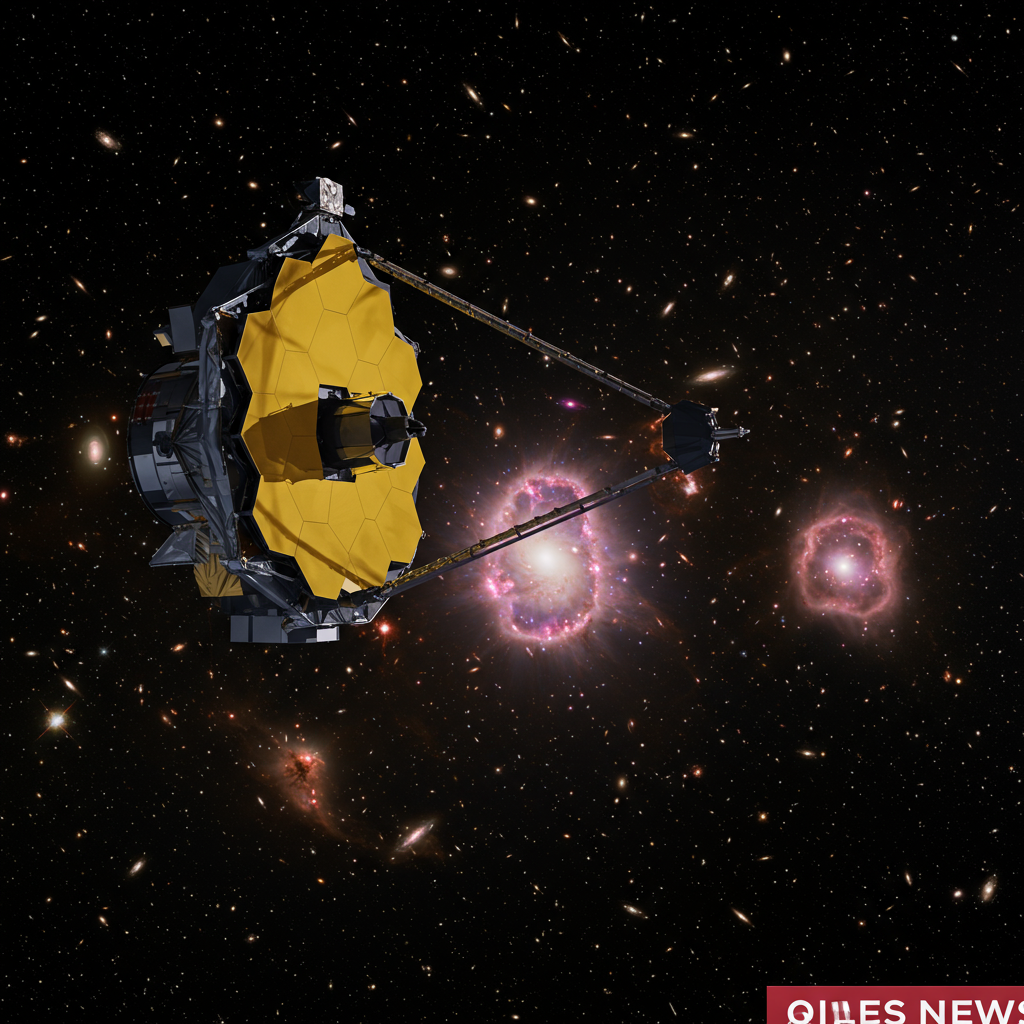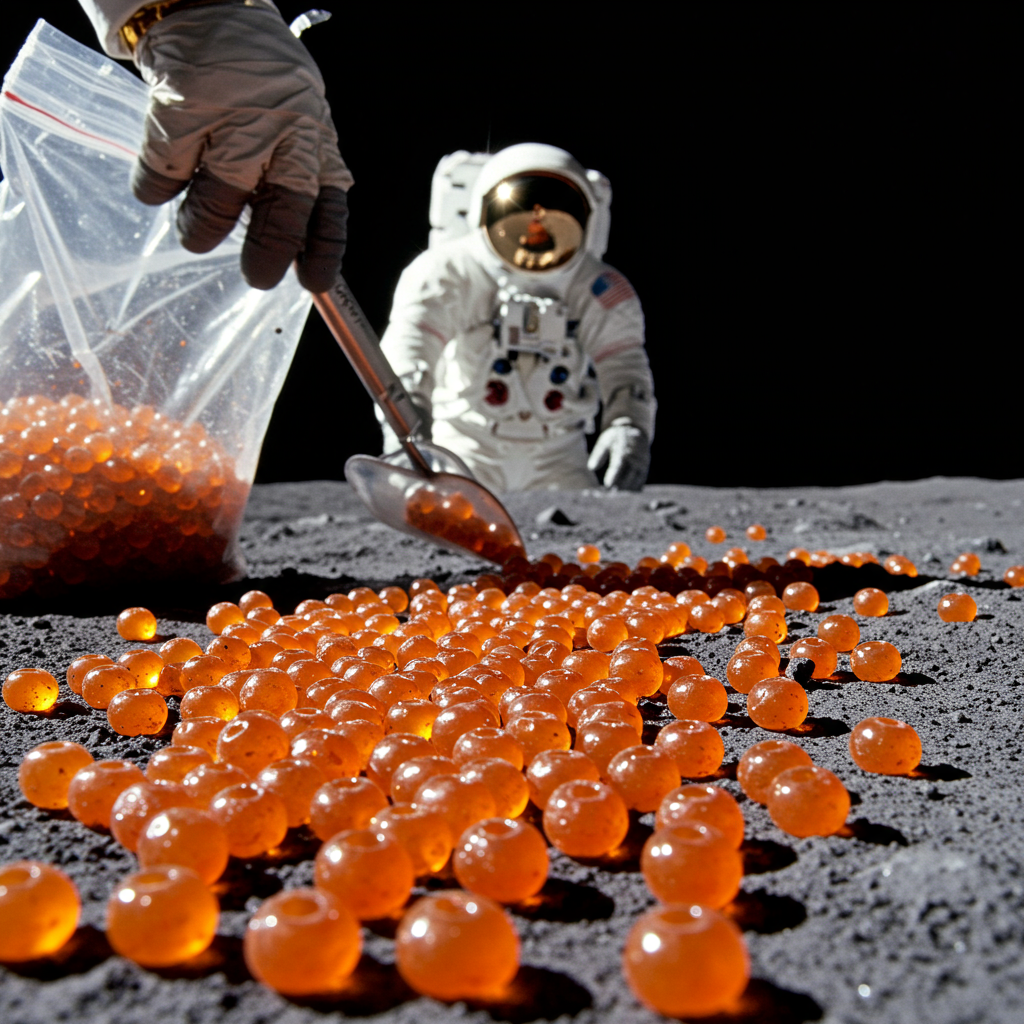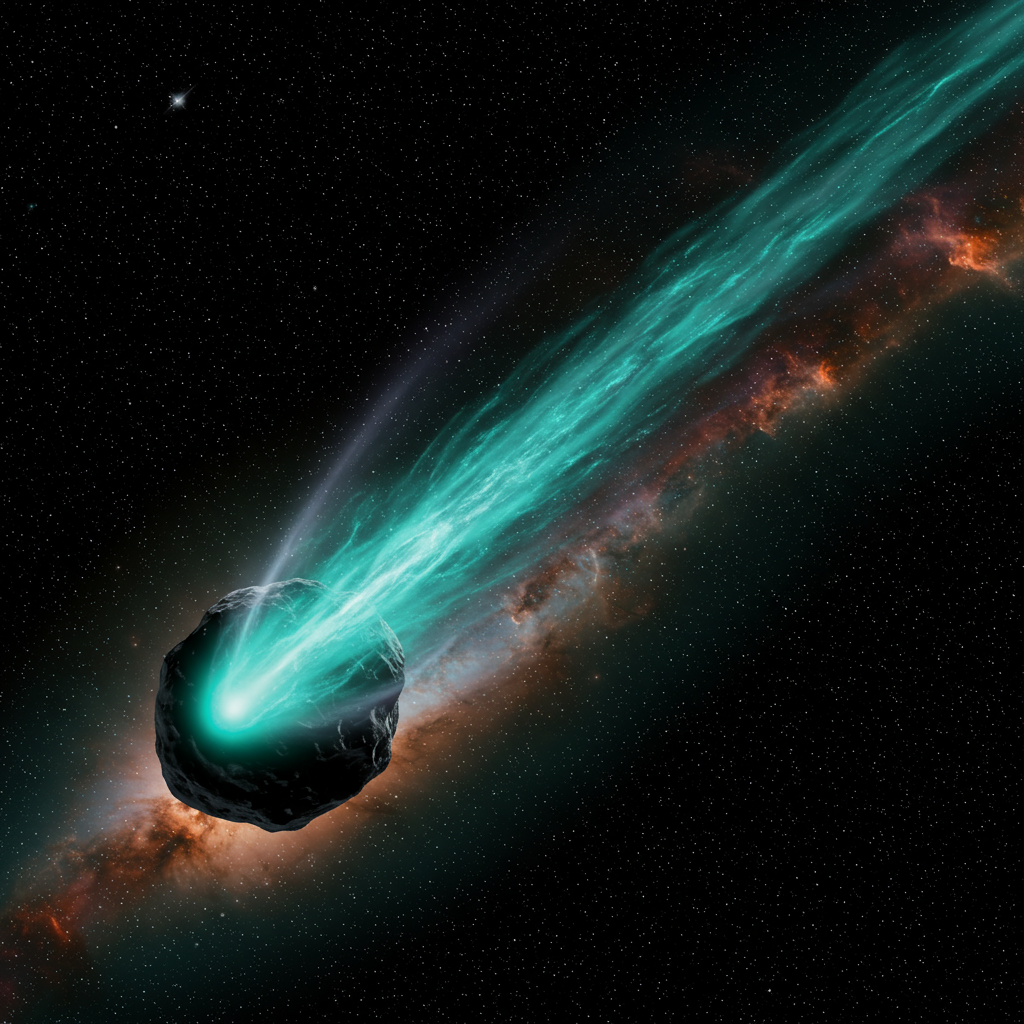The cosmos holds countless secrets, stretching across billions of years and light-years. Humanity’s quest to understand these cosmic origins has driven telescope technology forward. Today, one instrument stands out as the ultimate eye on the universe: the James Webb Space Telescope (JWST). This marvel of engineering can peer further back in time than any previous instrument, revealing the universe’s earliest moments. But just how far can the most powerful telescope really see into space?
The Dawn of Deep Space Vision
Since Hans Lippershey crafted the first simple telescope in 1608, our ability to observe the universe has leaped forward. Early telescopes offered modest magnification, but later innovations allowed scientists to probe deeper into the cosmos. While some telescopes focus on our solar system, others are designed for distant stars and galaxies. These powerful instruments let us study extreme phenomena like black holes and Einstein rings.
The James Webb Space Telescope, launched in December 2021, represents the pinnacle of this technological evolution. Unlike its predecessor, the Hubble Space Telescope, which primarily detected visible and ultraviolet light, JWST specializes in infrared wavelengths. These wavelengths are invisible to human eyes but are crucial for observing the most distant parts of the universe.
Why Infrared is Key to Cosmic Deep Dive
Many distant cosmic objects do not produce or reflect enough visible light to be seen from vast distances. This is where infrared light becomes essential. Infrared wavelengths are much longer, making them easier to detect across immense cosmic distances. They also possess a unique advantage: the ability to pierce through dense clouds of cosmic dust. This allows astronomers to view objects that would otherwise remain hidden.
Terrestrial telescopes, like the new Vera C. Rubin Telescope in Chile, face significant hurdles. Earth’s atmosphere introduces problems such as light pollution and “atmospheric turbulence.” These factors blur and distort images, severely limiting a ground-based telescope’s deep-space viewing capability. Operating in the vacuum of space, beyond Earth’s obscuring haze, gives telescopes like JWST an unparalleled advantage.
Engineering a Cosmic Powerhouse
The extraordinary power of the James Webb Space Telescope comes from several groundbreaking design elements. Its primary mirror measures an impressive 21.3 feet (6.5 meters) in diameter. This massive mirror provides a light-collecting area exceeding 270 square feet (25 square meters). In stark contrast, Hubble’s primary mirror is just 8 feet (2.4 meters) in diameter. This larger light-gathering capability is fundamental to JWST’s sensitivity.
Both JWST and Hubble benefit from their space-based locations, avoiding atmospheric interference. However, JWST’s specialized infrared detectors are uniquely positioned to absorb light redirected from its vast mirrors. This allows it to identify distant, faint infrared light that Hubble simply cannot perceive. To further enhance its infrared sensitivity, JWST’s instruments must be kept incredibly cold. A tennis-court-sized, five-layer sunshield blocks heat from the Sun, Earth, and Moon. This allows the instrument side to maintain an frigid -394°F (-237°C). The Mid-Infrared Instrument (MIRI) requires even colder temperatures, achieving -448°F (-267°C) with a dedicated cryocooler.
JWST’s strategic placement also plays a vital role. It orbits at a Lagrange point nearly 1 million miles (1.5 million kilometers) from Earth. These gravitationally stable points allow satellites to remain in a stable orbit with minimal fuel use.
Peering Back to the Cosmic Dawn
When we observe distant light in the night sky, we are inherently looking back in time. Light travels at a finite speed of approximately 186,282 miles (299,792,458 meters) per second. This means the light reaching us from far-off celestial bodies is billions of years old. Measuring how far a telescope can see isn’t a simple distance calculation; it involves understanding the universe’s expansion and light’s travel time.
Astronomers overcome these complexities by measuring “redshift.” As the universe expands, light emitted by objects moving away from us stretches to longer, “redder” wavelengths. The greater the redshift, the farther away the object is and the older its light. Peter Jakobsen, an astrophysics professor at the University of Copenhagen, confirms JWST’s remarkable capability: “The James Webb Space Telescope has proven itself capable of seeing 98% of the way back to the Big Bang.” This far exceeds initial expectations.
The universe began approximately 13.8 billion years ago. The earliest objects we can observe are from just over a hundred million years after this cosmic inception. JWST has already captured images of 850 galaxies dating between 11 and 13 billion years old. The current contender for the most distant known galaxy observed by JWST is JADES-GS-z14-0, dated to about 290 million years after the Big Bang, with a redshift of 14.18. Another, un-peer-reviewed contender, MoM-z14, potentially dates even earlier, to 280 million years post-Big Bang, showing a redshift of 14.44. JWST has already surpassed Hubble, which could only see as far back as 13.4 billion years.
Unveiling the Universe’s Secrets: JWST’s Discoveries
JWST’s initial observations are providing transformative insights, addressing long-standing questions and revealing new cosmic mysteries. Its ability to pierce through cosmic dust and observe ancient light offers a unique window into galactic and stellar evolution.
Galaxy Evolution: JWST’s images of the galaxy cluster SMACS 0723, showing thousands of galaxies, allow scientists to differentiate galactic properties. Brighter white galaxies in near-infrared suggest older populations. Mid-infrared images reveal red objects with thick dust layers, and blue galaxies with stars but little dust. This data provides crucial information on how galaxies formed, changed, and interacted over cosmic time. These deep field images also vividly demonstrate gravitational lensing, where closer galaxies magnify light from more distant background galaxies, acting as natural cosmic magnifying glasses. This phenomenon allows scientists to observe incredibly faint, far-off galaxies in more detail, even revealing “mirrored” galaxies appearing multiple times in the same image.
Formation of Stars and Planetary Systems: Within the Carina Nebula, JWST revealed countless small stars exhibiting “protostellar jets”—narrow streams of ultra-fast gas. This allows scientists to study the prevalence of these jets and their impact on star formation. In the Southern Ring Nebula, JWST’s infrared vision uncovered a previously hidden second star, a white dwarf, within the central star’s gas and dust shell. This confirmed its role in creating the planetary nebula.
Exoplanet Atmospheres: Using spectroscopy, JWST captured a light spectrum from the exoplanet WASP-96 b. This spectrum revealed clear indications of water, as well as compelling evidence for the presence of clouds and haze. Such findings are vital for understanding exoplanet atmospheric compositions and formation histories. JWST helps discover new exoplanets and characterizes known ones, including potential signs of life.
Black Hole Growth: In Stephan’s Quintet, JWST’s spectroscopic data showed hot gases like iron, argon, and neon being stripped of their electrons. This process is caused by powerful winds and radiation from a supermassive black hole at the core of the topmost galaxy. This direct observation provides critical data for understanding how supermassive black holes grow.
The Science of Measuring Cosmic Distances
Understanding cosmic distance is complex, considering the universe’s continuous expansion and light’s finite speed. Astronomers use redshift as their primary tool. Imagine a spring being stretched. As light travels across the expanding universe, its wavelengths “stretch” and shift towards the red end of the spectrum. The more distant an object, the more its light is redshifted. This allows scientists to infer how far back in cosmic history they are looking. JWST’s infrared capabilities are perfectly tuned to detect these highly redshifted, ancient signals.
The Future of Cosmic Exploration
While the James Webb Space Telescope currently reigns as the champion in probing the deep cosmos, new rivals are on the horizon. China is developing the China Space Station Telescope, which aims to capture a broader range of light frequencies than JWST. This could potentially allow it to extract even more information from the universe’s most distant reaches. Such continued advancements promise an even more detailed understanding of our cosmic past and future.
Frequently Asked Questions
What makes the James Webb Space Telescope so powerful?
The James Webb Space Telescope (JWST) is the most powerful telescope due to its large primary mirror, measuring 21.3 feet (6.5 meters) in diameter, which gathers significantly more light than its predecessors like Hubble. Its primary strength lies in detecting infrared and near-infrared wavelengths, allowing it to pierce through cosmic dust and observe the highly redshifted light from the earliest, most distant objects in the universe. Additionally, its cold operating temperature and stable orbit at a Lagrange point, far from Earth’s atmospheric interference, optimize its sensitivity.
Where is the James Webb Space Telescope located?
The James Webb Space Telescope is located approximately 1 million miles (1.5 million kilometers) from Earth. It orbits at a gravitationally stable point in space known as the Sun-Earth L2 Lagrange point. This unique position allows the telescope to maintain a stable orbit with minimal fuel. It also keeps the telescope in a consistent thermal environment, shielded from the heat of the Sun, Earth, and Moon by its massive sunshield, which is crucial for its infrared observations.
How far back in time can the James Webb Space Telescope see?
The James Webb Space Telescope can see astonishingly far back in time, almost to the very beginning of the universe. It has proven capable of observing objects that existed around 100 to 290 million years after the Big Bang, which occurred approximately 13.8 billion years ago. This means JWST can effectively see “98% of the way back to the Big Bang.” Its infrared capabilities allow it to detect the highly redshifted light from these ancient galaxies, offering unprecedented insights into the universe’s earliest formation.
Conclusion
The James Webb Space Telescope has revolutionized our understanding of the cosmos. Its unparalleled ability to detect infrared light, coupled with its massive mirror and precise orbital placement, allows it to peer back nearly to the Big Bang. From revealing hidden stars and characterizing exoplanet atmospheres to detailing black hole activity and imaging the earliest galaxies, JWST continues to unlock the universe’s deepest secrets. As new instruments emerge, the future of cosmic exploration promises even more astonishing discoveries, continuously pushing the boundaries of what we can see and comprehend about our vast universe.




